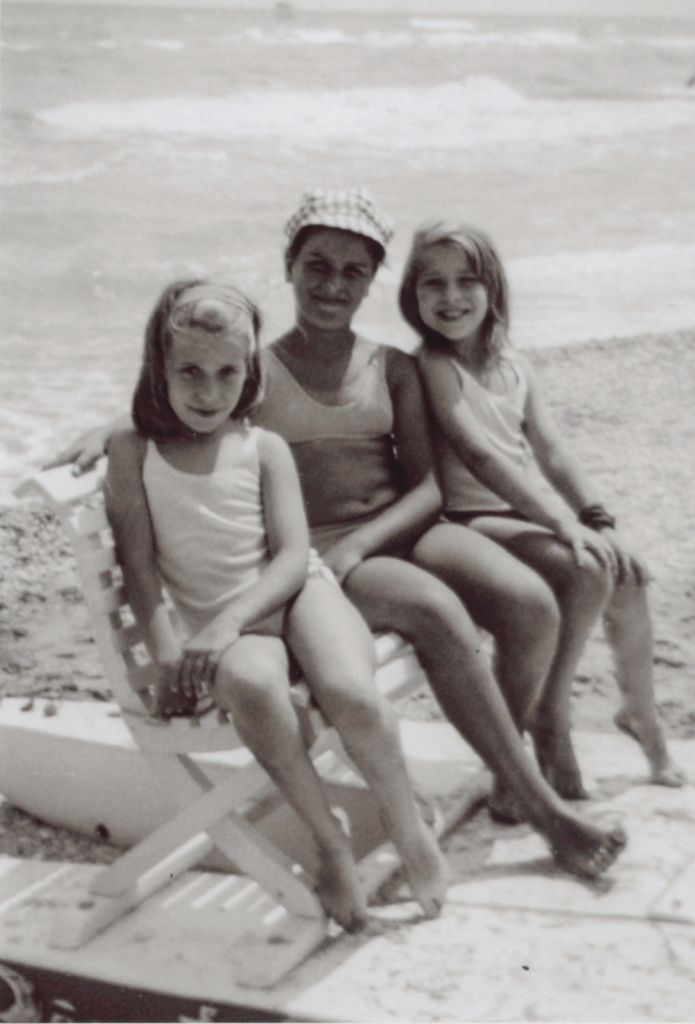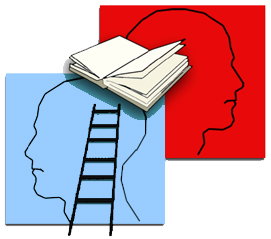My little friend Anna inhabited a tiny room at the top of a liberty house overlooking the beach; we must have been no more than ten years old at that time. It was an intimate friendship shared by my twin sister and developed through absorbed afternoon reading sessions, (sprawled on the beach); fierce swimming races, (no matter how rough the sea was) and graceful (from our point of view) gymnastic contests pretending to be alternatively Nadia Comaneci, Olga Korbut, and Nelly Kim. These varied activities were interspersed with outbursts of hanger, storming off the water, storming off the beach. Eclectic, unruly, over sensitive children.
In fact, most of us know how strained siblings’ relationships can get, but only a few perhaps, being twins, have experienced the feeling of looking at the very copy of the original and ask your child self why you had to drag it along everywhere. Puzzled children.
Anyway, up to then, I had never been afforded a visit to Anna’s bedroom, but on that day, she took me to it to show me something. It was dim inside so Anna swung the window open and a tableau came into view; the sea was nestled in a blue limpid horizon, the high sun was glinting off the water, sparkling diamond dots bouncing on it. Wonder before our eyes; enchanted children.
It might be possible that we all have these primary images of beauty, related to our own Countries, which we somehow managed to committee to our minds and hearts; it is through these cognitive visuals and feelings that we learnt to name the World. Our Worlds becoming real through our Home Languages. Eager learning children.
Seen in this way, our Home Language is an expression of meanings dear to us, our thoughts, our knowledge and our full range of emotions developed and mastered through consistent exposure to our Home Language. In this respect, research studies have also shown that a strong mother foundation provides the children with the skills they need to learn additional languages, allowing them to transfer their understanding of the structure of language to several new languages.
Then, it is worth pointing out that in our new boundless social World, with multilingualism becoming an increasing sought-after asset (the following may sound rather counterintuitive, I suspect) we should strongly resort to our mother tongue teachers. As a matter of fact, the more we delve into our Home Language the better we will get at grasping concepts, forming structures, analysing forms, building up a variety of cognitive and learning skills ready to be exploited in any other language.
The role of the teacher takes then centre stage, how can we create an effective learning environment? If I look back at my experiences of being taught, I can indeed recall some teachers I was actually passionate about but I have no memory of their methods or techniques, just a feeling, yes, one I can still sense. I felt perfectly capable, I felt utterly accepted and I felt remarkably encouraged.
These teachers were able to see through their students, through their being over sensitive, unruly, and puzzled.
They did know. They had not lost contact. They also had been children. Enchanted with life and eager to learn.

References
– Techniques & Principle in Language teaching – Diane Larsen Freeman – Oxford University Press 2017
– Crescere nel bilinguismo – Aspetti cognitivi, linguistici e emotivi – Silvia Contento – Carrocci editore 2012
– Thought and Language. Lev Vygotsky (A. Kozulin, rev. ed.). Cambridge, MA: MIT Press, 1986. Pp. lxi + 287.
